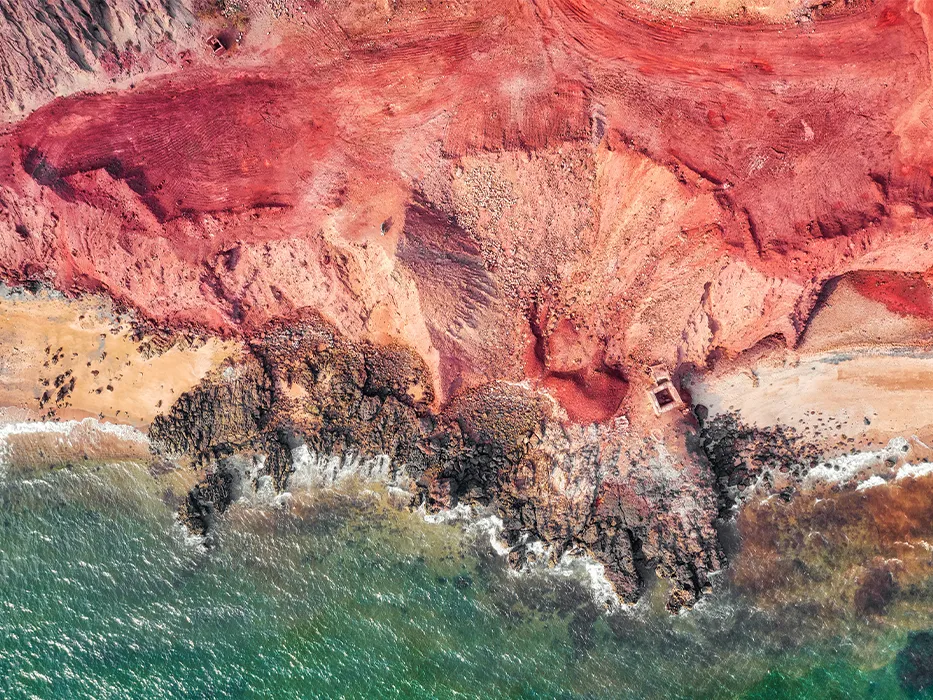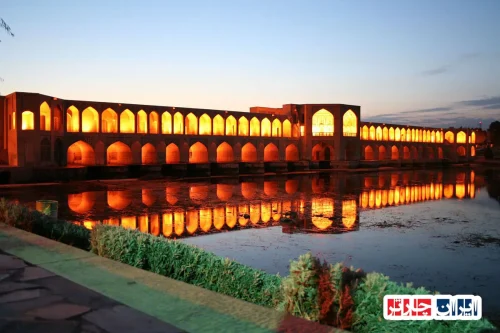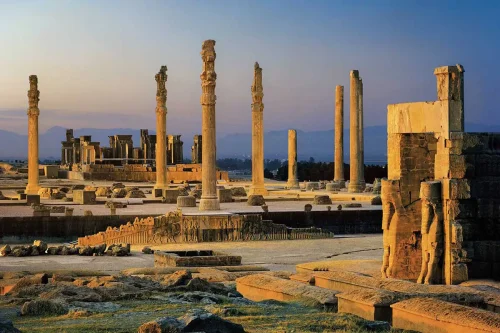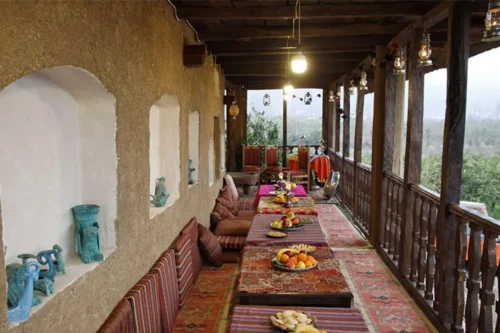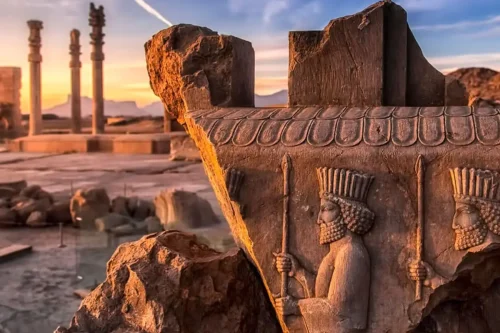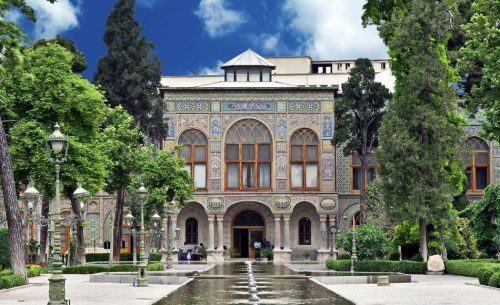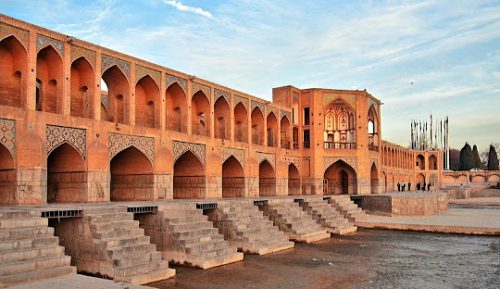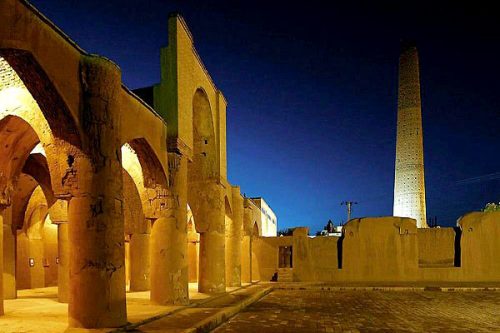Hormuz Island Suffers as Ineffective Visitor Controls Spur Unchecked Tourist Influx
In recent years, the delicate balance of Hormuz Island’s charm and historical legacy has been increasingly disrupted as growing numbers of visitors trip over inadequate management measures. The issue, encapsulated by the observation that “Hormuz Island Suffers as Ineffective Visitor Controls Spur Unchecked Tourist Influx”, is not merely a headline but a call to reconsider how tourism is managed on this culturally rich and geographically unique island. Nestled in the heart of the Persian Gulf, Hormuz Island has long been celebrated for its naturally breathtaking landscapes, storied past, and vibrant cultural traditions. Yet, as visitor numbers surge without systematic control, many local stakeholders and researchers have begun to highlight that this renowned destination is facing challenges that threaten both its environmental integrity and its historical essence. The phenomenon of unchecked tourism has led to a scenario where the island’s ancient heritage sites and pristine natural vistas are gradually bearing the impact of mass visitation. Authorities, overwhelmed by the surge, have struggled to enforce visitor controls effectively. As a result, the very phrase “Hormuz Island Suffers as Ineffective Visitor Controls Spur Unchecked Tourist Influx” resonates throughout discussions with local communities and environmental analysts alike. For generations, the island’s residents have maintained an intrinsic bond with the land—a commitment to preserving the stories, structures, and traditions that define their identity. Today, however, this commitment stands challenged as the tourist influx threatens to disrupt the rhythm of daily life and the seasonal cycles that have long governed local practices. Tourism, when properly managed, can serve as a powerful engine for economic and cultural exchange. In the case of Hormuz Island, visitors are drawn by the allure of ancient architecture, scenic coastlines, and the rich tapestry of traditions woven over centuries. Unfortunately, the lack of coordinated visitor management has transformed a potentially sustainable tourism model into a scenario fraught with risks. Environmental degradation, strain on local infrastructure, and the dilution of age-old customs are emerging as recurring themes among experts. The situation is not one of deliberate neglect; rather, it is the cumulative result of rapid visitor growth combined with outdated or under-resourced management strategies. The stirring reality that “Hormuz Island Suffers as Ineffective Visitor Controls Spur Unchecked Tourist Influx” also reminds us how even the most treasured locations can become vulnerable when proactive planning is absent. Historically, Hormuz Island has been a crossroads of civilizations. Its strategic location has attracted traders, scholars, and invaders, all of whom have left behind a legacy of cultural fusion and architectural marvel. In modern times, however, the allure of the island’s historical narrative is being challenged by the pragmatic needs of contemporary tourism. The island’s unique natural and man-made wonders are at risk of being overrun by visitors who, though well-intentioned, unintentionally compromise the authenticity of the experience. As global tourism trends lean toward immersive and context-rich experiences, the lack of effective visitor oversight creates a paradox where increased attention leads simultaneously to both economic opportunities and deterioration of heritage assets. The repeated assertion that “Hormuz Island Suffers as Ineffective Visitor Controls Spur Unchecked Tourist Influx” is a stark critique of this unsustainable growth pattern. Local officials and community leaders have voiced profound concerns regarding the degradation of cultural landmarks and the environmental toll inflicted by the influx of tourists. Many fear that the rapid pace of change might erode the island’s unique identity—a blend of ancient traditions and natural beauty that has evolved over centuries. The sentiments expressed under the banner of “Hormuz Island Suffers as Ineffective Visitor Controls Spur Unchecked Tourist Influx” are not isolated incitations of alarm but are shared widely among those who see the island as a living museum, where every stone and ripple tells a story. The neglect in updating visitor control policies has meant that while the island welcomes a diverse mix of travelers, it inadvertently exposes itself to the risks of overcrowding, waste management challenges, and the unintended alteration of landscapes that have otherwise remained pristine for generations. In examining these challenges, it becomes clear that a reformed approach to tourism management is essential. Strategic plans that integrate modern visitor control techniques with respect for cultural heritage are not just beneficial—they are imperative. Policy-makers, local experts, and community representatives must collaborate closely to devise frameworks that balance economic growth with long-term sustainability. Initiatives such as limiting visitor numbers during peak seasons, implementing educational programs that promote respectful behavior, and investing in infrastructure that minimizes environmental impact are critical steps toward mitigating the adverse effects observed today. It is within this context that the phrase “Hormuz Island Suffers as Ineffective Visitor Controls Spur Unchecked Tourist Influx” should serve as both a warning and a catalyst for change. The conversation around tourism on Hormuz Island extends beyond mere statistics. It delves deeply into the realm of cultural preservation and environmental stewardship. As modern visitors increasingly demand experiential travel that connects them with authentic history and nature, the island faces a dual challenge: to safeguard its irreplaceable assets and to cater to a global audience eager to learn from its legacy. The current unbalanced growth in the tourism sector has left many wondering if it is possible to restore harmony between tourism development and the preservation of cultural resources. Enthusiasts, historians, and environmental advocates alike continue to reiterate that “Hormuz Island Suffers as Ineffective Visitor Controls Spur Unchecked Tourist Influx” because, without immediate and thoughtful intervention, the island might lose some of the qualities that have drawn people to it for centuries. In light of these challenges, there is an urgent call to action for both governmental agencies and local custodians of culture. The task is not solely to manage tourism from a regulatory standpoint but to foster an environment where sustainable practices become the norm rather than the exception. Incorporating modern technology in monitoring visitor flows, educating travelers about the island’s historical significance, and strengthening community involvement in tourism planning are just a few of the measures that could help counterbalance the current trajectory of decline. In doing so, it is hoped that future narratives will celebrate Hormuz Island not as a victim of poor planning but as a model for sustainable tourism development where every visitor leaves not just with memories, but with a deep respect for a legacy that spans millennia. Each step taken toward improved visitor controls means that the island can continue to evolve while safeguarding its cultural and environmental heritage for future generations. Indeed, what is at stake is much more than scenic beauty or economic opportunity—it is the very soul of an island that has been a silent witness to centuries of historical evolution. The continuous refrain that “Hormuz Island Suffers as Ineffective Visitor Controls Spur Unchecked Tourist Influx” encapsulates a broader concern: the clash between modernity and tradition, development and conservation. As the world becomes more connected and tourism more accessible, Hormuz Island stands as a poignant example of how even the most idyllic destinations can be pushed to a breaking point without deliberate and sustainable planning. Every visitor who treads upon its ancient paths is a part of a larger story—a story that must be told with care, respect, and a commitment to preserving the intrinsic values that define this legendary island.
Tourism Infrastructure Developments: A New Horizon Amid Unchecked Visitor Influx
The rapid rise in tourist numbers on Hormuz Island has underscored the urgent need for modernizing and expanding tourism infrastructure. Recent investments have aimed to update road networks, enhance public facilities, and upgrade historic site management to balance growth with preservation. However, as the issue of “Hormuz Island Suffers as Ineffective Visitor Controls Spur Unchecked Tourist Influx” demonstrates, these efforts are constantly challenged by the absence of coordinated policies. Comprehensive infrastructure improvements are key to managing visitor flows while ensuring that the island continues to offer its breathtaking natural landscapes and cultural attractions without jeopardizing its heritage.
Enhanced Accommodation and Hospitality: Crafting a Unique Visitor Experience
To counter the challenges posed by surging tourism, a renewed focus on quality accommodations and hospitality services has emerged. Hotels and traditional guesthouses, designed to mirror the island’s historical and cultural charm, are offering modern comforts alongside authentic experiences. These initiatives not only provide a more enjoyable stay for visitors but also aim to mitigate the adverse effects highlighted by the ongoing issue of uncontrolled tourist influx. By fostering a balance between modern amenities and the island’s rich traditions, the local community aspires to create a sustainable hospitality model that is welcoming yet respectful of Hormuz Island’s legacy.
Economic Transformation Amid Tourism Challenges: Harnessing Growth and Heritage
The influx of tourists has catalyzed significant economic activity on Hormuz Island, generating revenue and creating new business opportunities for local vendors and artisans. Although this economic boost is vital for regional development, it must be carefully managed to avoid compromising the island’s cultural assets. As challenges persist, including the critical case where “Hormuz Island Suffers as Ineffective Visitor Controls Spur Unchecked Tourist Influx,” stakeholders are increasingly advocating for strategies that promote sustainable economic growth. By investing in local enterprises and fostering entrepreneurship, Hormuz Island is set to transform its tourist surge into lasting prosperity without sacrificing heritage.
Bridging the Past and Future: Cultural and Historical Growth on Hormuz Island
Hormuz Island is steeped in history, with countless monuments and cultural narratives that date back centuries. Current efforts focus on revitalizing these historical treasures to offer visitors an immersive journey into the island’s storied past. Amid the challenges of uncontrolled tourist numbers, which echo the sentiment that “Hormuz Island Suffers as Ineffective Visitor Controls Spur Unchecked Tourist Influx,” cultural conservation projects now include guided tours, interactive exhibitions, and community-driven storytelling sessions. This balanced approach not only preserves the integrity of ancient sites but also paves the way for a future where heritage and tourism coexist harmoniously.
Environmental Stewardship and Sustainable Development: Preserving Natural Beauty
Environmental concerns have risen as tourist activities begin to strain Hormuz Island’s delicate ecosystems. Local initiatives are increasingly focused on sustainable practices that protect both the island’s natural landscapes and its historic sites. Environmental monitoring systems, waste management improvements, and eco-friendly transport options are being implemented to counteract the effects of uncontrolled tourism. These measures aim to address the overarching issue encapsulated in “Hormuz Island Suffers as Ineffective Visitor Controls Spur Unchecked Tourist Influx,” ensuring that every visitor leaves a positive impact on the local environment while enjoying the island’s pristine beauty.
Advancements in Maritime Transportation: Linking Hormuz Island with the World
As a key maritime hub in the Persian Gulf, Hormuz Island is leveraging improvements in marine transportation to better manage tourist arrivals and departures. Upgraded ports, the introduction of modern ferries, and streamlined scheduling are playing pivotal roles in reducing congestion and enhancing travel safety. Such infrastructural advancements contribute significantly to alleviating the pressures of unchecked tourism. By connecting Hormuz Island more efficiently with international markets and neighboring regions, these initiatives help transform the narrative of “Hormuz Island Suffers as Ineffective Visitor Controls Spur Unchecked Tourist Influx” into one of strategic development and controlled expansion.
Safeguarding Cultural Heritage and Historical Monuments: Preserving an Enduring Identity
The preservation of Hormuz Island’s rich cultural and historical identity remains a top priority amid the challenges posed by soaring tourist numbers. Restoration projects, comprehensive documentation, and regulated visitor access to historic monuments are integral components of the island’s preservation strategy. As the critical issue of uncontrolled tourism continues to manifest in the sentiment that “Hormuz Island Suffers as Ineffective Visitor Controls Spur Unchecked Tourist Influx,” these conservation efforts are designed to protect valuable artifacts and ancient architecture while educating visitors about the significance of sustainable travel.
Identifying New Investment Opportunities: Paving the Way for Strategic Development
Recognizing the economic potential of Hormuz Island’s unique heritage and natural beauty, local leaders and private investors are exploring innovative ways to harness tourism for long-term benefits. Diverse investment opportunities spanning hospitality, cultural projects, and eco-friendly initiatives are emerging to balance growth and conservation. With the ongoing challenge that “Hormuz Island Suffers as Ineffective Visitor Controls Spur Unchecked Tourist Influx” as a catalyst, these investments are aimed at modernizing infrastructure, enhancing visitor management, and fostering a thriving local economy. This strategic approach is set to create a dynamic and resilient framework for future development.
Visionary Planning for a Sustainable Future: Charting a Course Toward Renewal
Looking ahead, comprehensive planning and cross-sector collaboration stand as the cornerstones for transforming Hormuz Island into a model of sustainable tourism. Long-term development plans are being crafted in collaboration with local authorities, cultural custodians, and international partners under the guiding principle that every effort must counterbalance the issues raised by “Hormuz Island Suffers as Ineffective Visitor Controls Spur Unchecked Tourist Influx.” By integrating advanced monitoring systems, visitor education programs, and heritage conservation into a unified strategy, Hormuz Island is poised to set an example of how historical sites can thrive amidst global tourism trends. This forward-thinking vision is essential for preserving the island’s identity while unlocking new opportunities for growth and innovation under the trusted banner of Iran Charter.
Frequently Asked Questions
- How can business licenses in the tourism sector be simplified?
- By facilitating the acquisition of licenses through support from the relevant authorities and expediting document review processes, a solid foundation is created for the growth of tourism and related businesses.
- What measures have been taken in the tourism infrastructure of Hormuz Island?
- Several transformative projects in the port and tourism sectors, aimed at enhancing accommodation and transportation facilities, have elevated the island’s infrastructure to a new level.
- Why is the distribution of livelihood packages important on Hormuz Island?
- Given the current economic conditions, providing livelihood packages to those in need creates a sense of security and fosters community support among local residents.
- How does the modernization of the water supply network on Hormuz Island affect residents’ lives?
- Modernizing the water supply network has significantly improved quality of life by ensuring that essential needs of both residents and tourists are met.
- What travel restrictions have been imposed on Hormuz Island during Nowruz?
- To manage increased demand and maintain order, certain restrictions on tourist entry and exit have been implemented, requiring travelers to register in advance.
- How has the sale of land on Hormuz Island gained momentum?
- Despite various prohibitions, the sale of land as a construction material has experienced remarkable growth among industries and interested buyers.
- What is the biggest challenge facing tourism on Kish Island?
- A major challenge is the lack of flights and air connectivity, which has a significant impact on tourism and calls for prompt solutions.
- What do maritime warnings on Hormuz Island advise travelers to consider?
- Maritime warnings, such as orange alert levels in specific sea areas, advise travelers to exercise caution and strictly follow necessary safety measures during adverse weather conditions.
- What are the objectives behind the visits of sports officials to Hormuz Island?
- These visits are aimed at evaluating sports facilities and encouraging youth participation, which in turn helps boost sports development and community engagement on the island.
- How is the importance of visiting the birthplace of anti-colonial struggle on Hormuz Island assessed?
- Such visits offer a unique opportunity to learn about the rich heritage of resistance and gain a deeper understanding of national history and culture.
- Why does the governor of Hormozgan emphasize enhancing the island’s formal economy?
- Strengthening the formal economy creates a more competitive environment for locals and improves municipal services through increased tax revenues.
- What trend is shown by the statistics of maritime travel to Hormuz Island?
- With a noticeable increase in sea travel and roughly a 9% growth compared to previous periods, the statistics indicate a positive trend for tourism.
- How important is equipping ports with AED devices and what impact does it have on safety?
- Installing automated external defibrillators (AED) at ports plays a crucial role in reducing emergency risks and significantly enhances the safety of travelers, especially in crowded areas.
- What role do investment plans in the handicraft sector on Hormuz Island play?
- Investments in the handicraft sector foster job creation and significantly boost local culture while enhancing the tourism appeal of the island.
- What measures have been taken to standardize tourism tours?
- Establishing clear standards and closely monitoring tour qualifications have ensured that travelers receive reliable and high-quality tourism services.
- What is the role of supporting domestic production in reducing production barriers on Hormuz Island?
- Support for domestic production, along with a reduction in administrative obstacles and enhanced coordination among relevant authorities, has paved the way for the development of local industries and improved product quality.

